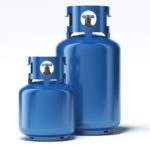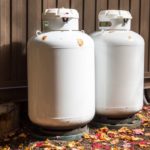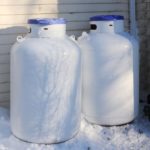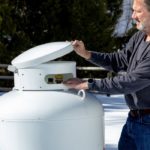Gas cylinders and propane tanks can appear to be “sweating,” which might raise some concerns, especially if you don’t know why it’s happening or if it’s dangerous. Cylinder sweating is especially common in hotels and restaurants, but it happens at home as well. What causes this, and do you need to care?
Condensation on a propane tank is normal. During use, the gas in the tank changes pressure making the tank colder, and this leads to condensation (or frost) forming on the outside. You can use a dehumidifier to reduce humidity and lessen condensation, or put a drain pan under the tank.
While it’s generally okay for your cylinder to sweat, you may want to reduce condensation if there’s a lot. There are some simple ways to manage that condensation as mentioned above, but let’s take a closer look at this phenomenon and what to do about it. In most cases you can ignore the condensation, and it’s not going to cause any safety issues with the gas or the tank use at all.
Is It Normal for Gas Cylinders to Sweat?
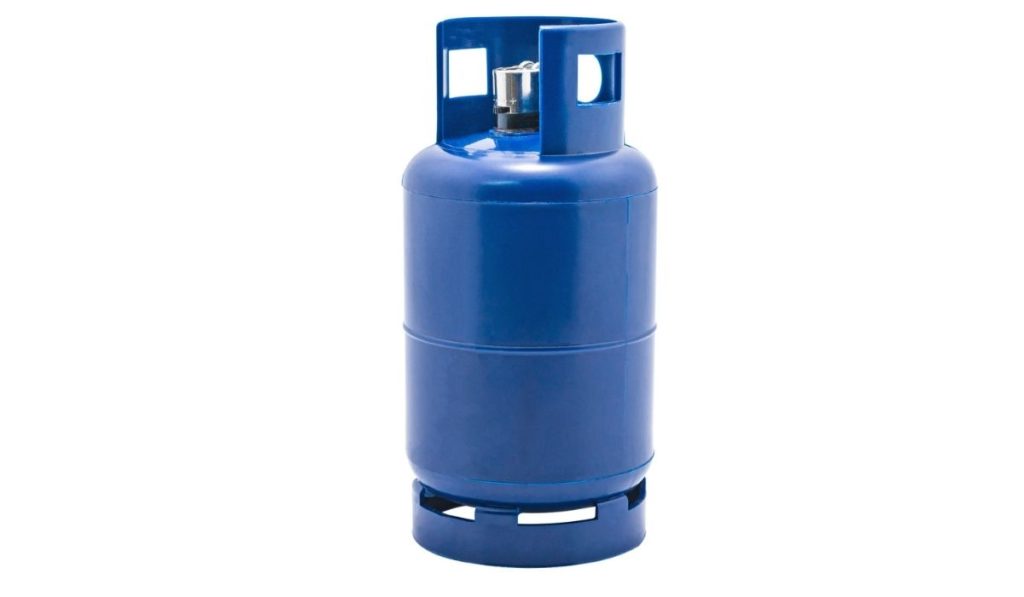
If you’ve got a gas cylinder at home, chances are you might have noticed water droplets that look like sweat have formed on the outside of the cylinder.
This phenomenon is called “cylinder sweating.” To start with, propane, or liquefied petroleum gas (LPG), is stored in these cylinders in a liquid state. When you drawn propane from the tank, the liquid gas is converted to vapors through the process of natural vaporization.
This converted propane is then pushed through burners and enables your stove and grills to flame up. The rate at which this natural vaporization happens is very low, and as the usage increases, so too does the LPG consumption. This means that the rate of natural vaporization increases to a point where it can’t keep up with the rate of conversion.
When this happens, the LPG inside the cylinder starts to draw heat from the surrounding atmosphere to keep converting into vapors. This then drops the surrounding temperature. The cooling effect enables water vapor to condense and form droplets around the outside of the cylinder.
In some extreme cases, you can even see visible ice forming on the outside of the cylinder.
Now that you understand how the water droplets form on the outside of the cylinder, you can begin to see why it’s completely normal to happen.
Which Factors Contribute to Condensation on the Tank?
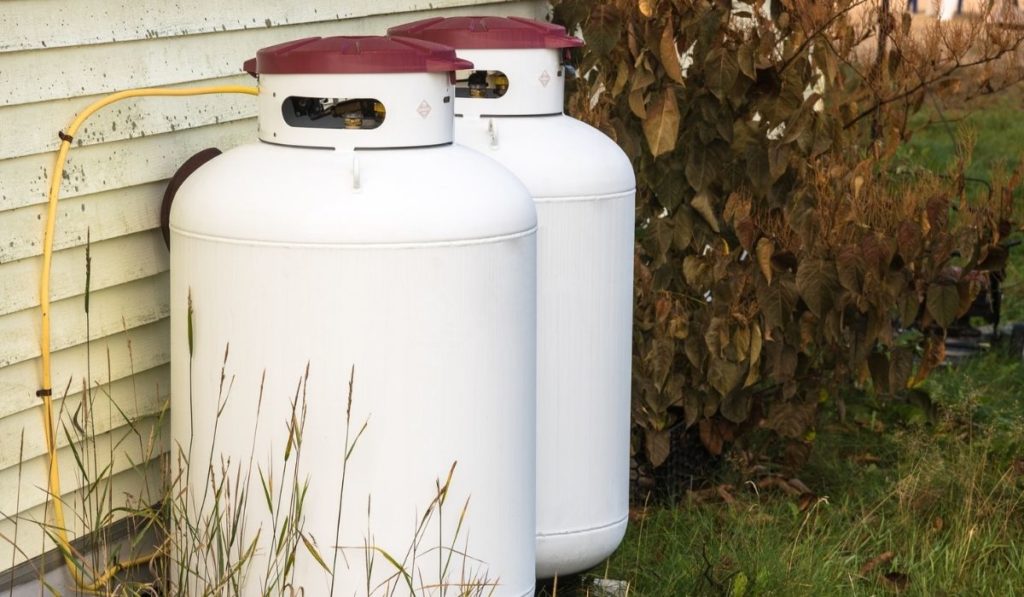
Here are some ways condensation can form on your propane tank:
Temperature
It’s normal for condensation to happen on a propane tank due to the temperature. This is the case when there is a difference between the surrounding temperature and that of the propane inside the tank. Once the propane is extracted, it’s converted into vapor form and it cools rapidly.
If there is a major difference in temperature in the surrounding air, condensation takes place on the outside of the tank. This is when the water droplets start to form. The process is similar to when ice ends up forming on the outside of the propane tank.
Regulators
Regulators can also play a role in the condensation process. Sometimes, the transfer of propane, as it changes from a liquid to vapor state, will happen so fast that it ends up freezing the regulator valve.
Amount
How much propane there is in the tank will also matter when looking at condensation. Greater levels of propane in the tank will bring about greater levels of freezing or condensation outside of the tank.
What Should I Do About Tank Sweating?
While condensation is completely normal for gas tanks and cylinders, there are some ways to deal with it.
In order to avoid this excess condensation, you can place the propane tank in an area with a dehumidifier like the yaufey 1500 Sq. Ft Dehumidifier for Home and Basement (on Amazon). You can also place the tank on a simple drain pan like this one (also on Amazon) which will allow the condensed water to simply run off from the exterior of the tank, into a drain.
If the issue continues, you can use special LOT cylinders that eliminate the risk of cylinder sweating. LOT stands for liquid off-take, and this is pretty exotic tech you probably don’t need, but it IS technically an option to reduce the condensation formation.
In all cases, remember to keep the cylinder or tank away from flames and in a well-ventilated area. You should also follow the manufacturer’s advice to prevent any mishaps with the tanks.


